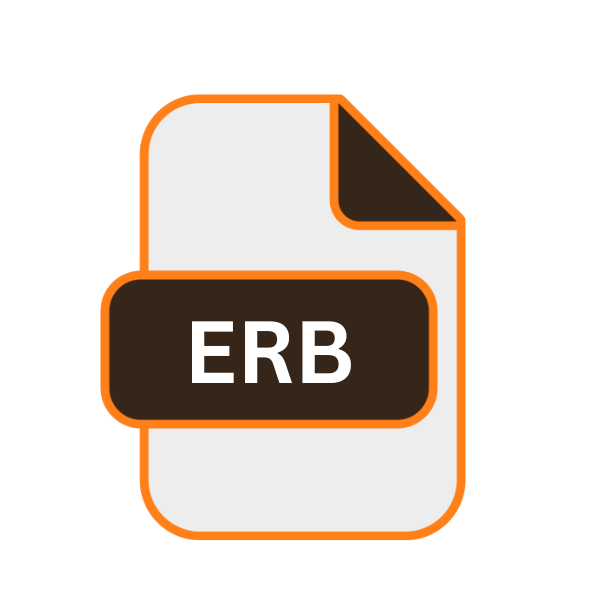.ERB File Extension

Ruby ERB Script
| Developer | N/A |
| Popularity | |
| Category | Developer Files |
| Format | .ERB |
| Cross Platform | Update Soon |
What is an ERB file?
In the realm of programming, file extensions signify the format and purpose of a file. One such extension, .ERB, is closely associated with Ruby ERB scripts.
These files hold a unique significance in web development, particularly within the Ruby on Rails framework. Understanding the nuances of .ERB files are crucial for developers leveraging Ruby for their projects.
More Information.
The inception of .ERB files date back to the early 2000s when Ruby on Rails emerged as a revolutionary web development framework. ERB templates became integral to Rails applications, enabling developers to design interactive and data-driven websites.
The primary purpose of .ERB files is to separate the presentation layer from the business logic, promoting clean and maintainable code architecture.
Origin Of This File.
The .ERB file extension finds its roots in the Ruby programming language. ERB, short for Embedded RuBy, serves as a template engine for Ruby, allowing developers to embed Ruby code within HTML files.
This amalgamation of Ruby and HTML empowers developers to create dynamic web pages with ease.
File Structure Technical Specification.
A typical .ERB file comprises HTML markup interspersed with Ruby code enclosed within special delimiters. These delimiters, <% and %>, delineate Ruby code blocks, while <%= and %> denote Ruby expressions to output dynamic content.
The structure of .ERB files adhere to the principles of MVC (Model-View-Controller), fostering modular and scalable web development practices.
How to Convert the File?
Converting .ERB files to other formats or manipulating them for different purposes can be achieved through various methods and tools. Here’s a general guide on how to convert .ERB files:
1. Text Editors:
- Open the .ERB file using a text editor such as Notepad++, Sublime Text, or Visual Studio Code.
- Copy the content of the .ERB file.
- Paste the content into a new file with the desired format’s file extension (e.g., .html for HTML files).
- Save the new file with the appropriate extension.
2. Template Engines:
- Utilize Ruby’s ERB template engine to render .ERB files into HTML or other formats programmatically.
- Write a Ruby script that loads the .ERB file, processes it and saves the output in the desired format.
- Execute the script to perform the conversion.
3. Command Line Tools:
- Use command-line tools like ERB itself (which is part of the Ruby standard library) or custom scripts.
- Execute commands to process the .ERB file and generate output in the desired format.
- For example, in a Unix-like environment, you can use the
erbcommand followed by input and output file names to render .ERB files.
4. Integrated Development Environments (IDEs):
- Some IDEs, such as RubyMine, offer features or plugins for working with .ERB files and may provide options for exporting or converting them to other formats.
- Explore the IDE’s documentation or settings to find any built-in conversion functionalities.
5. Online Conversion Tools:
- There are online services and tools available that allow you to convert .ERB files to other formats.
- Upload the .ERB file to the online tool’s website and specify the desired output format.
- The tool will process the file and provide a download link for the converted file.
6. Custom Scripts or Programs:
- Develop custom scripts or programs tailored to your specific conversion requirements.
- Utilize programming languages like Ruby, Python, or JavaScript to write scripts that parse .ERB files and generate output in the desired format.
- This approach offers flexibility and control over the conversion process but requires programming expertise.
Advantages And Disadvantages.
Advantage:
- Simplicity: .ERB files offer a straightforward approach to embedding Ruby code within HTML, simplifying the development process and promoting code readability.
- Versatility: The integration of Ruby allows developers to generate dynamic content, manipulate data, and interact with databases seamlessly, enhancing the functionality of web applications.
- Modularity: By separating the presentation layer from the business logic, .ERB files promote modular and scalable code architecture, facilitating easier maintenance and updates.
Disadvantage:
- Debugging Complexity: Complex logic embedded within .ERB templates can pose challenges in debugging, especially when troubleshooting issues related to dynamic content generation.
- Mixing Concerns: While .ERB files facilitate the integration of Ruby code with HTML, improper use may lead to the mixing of concerns, violating the principles of separation of concerns and compromising code maintainability.
- Performance Overhead: The execution of Ruby code within .ERB templates incur a performance overhead compared to static HTML, potentially impacting the responsiveness and scalability of web applications under heavy load.
How to Open ERB?
Open In Windows
Use a text editor like Notepad++, Visual Studio Code, or Sublime Text. Simply double-click the .ERB file, and it should open in the default text editor associated with .ERB files on your Windows system.
Open In Linux
Linux offers a variety of text editors and IDEs. You can use command-line editors like Vim or Emacs, or graphical editors like Sublime Text, Atom, or Visual Studio Code.
You can open .ERB files with any of these editors by double-clicking on the file or by opening them from within the editor.
Open In MAC
On macOS, you can use text editors like TextEdit, Sublime Text, Atom, or Visual Studio Code to open .ERB files. Double-clicking the file should open it in the default text editor associated with .ERB files on your macOS system.
Open In Android
While Android is primarily a mobile operating system, you can still open .ERB files using text editor apps available on the Google Play Store.
Apps like QuickEdit Text Editor, DroidEdit, or Turbo Editor allow you to view and edit text files, including .ERB files, on your Android device.
Open In IOS
On iOS devices like iPhones and iPads, you can use text editor apps from the App Store to open .ERB files. Apps like Textastic, Koder, or Buffer Editor provide a feature-rich environment for viewing and editing text files, including .ERB files, on your iOS device.
Open in Others
For other operating systems or environments, you can use cross-platform text editors like Visual Studio Code, which is available for Windows, Linux, and macOS.
Online code editors such as GitHub’s built-in editor or CodePen provide options for viewing and editing .ERB files in any web browser, regardless of the operating system.













